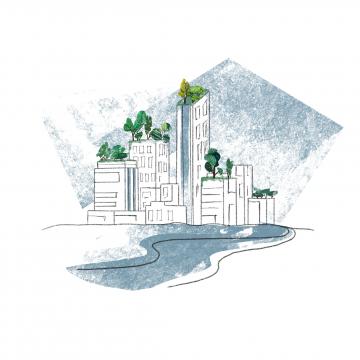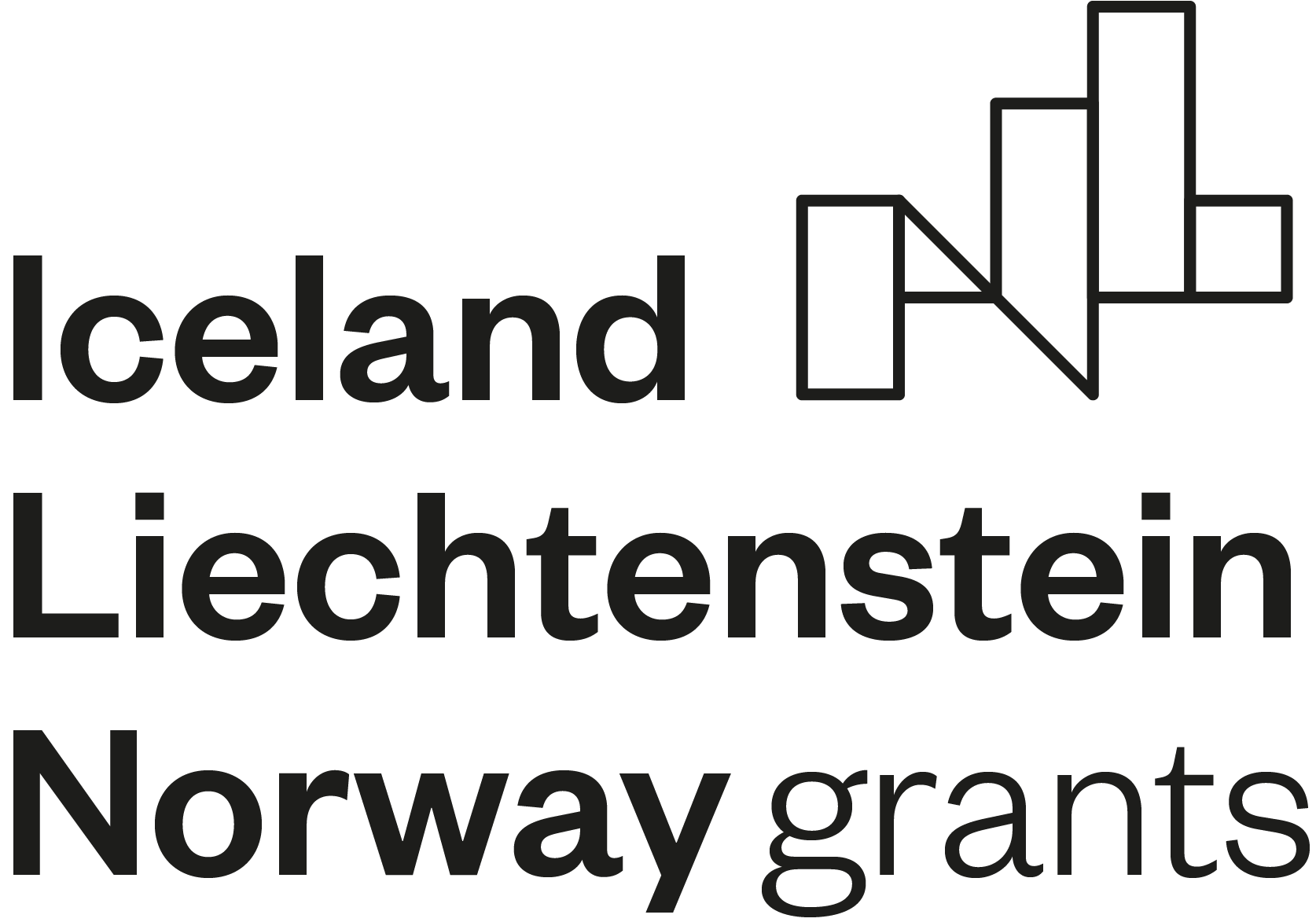
Water in the city
The issue of water in the city is getting more and more attention since the "High Water" series premiere. Has water management changed enough to prevent the repeat of events from Wrocław?
Nowadays, we are used to accessing water so easily that we can't imagine it could be otherwise. However, voices that water may run out appear with increased frequency. According to WWF - climate change, poor water management, and drying of the river and wetlands bring us closer to the water crisis. The condition of Polish watercourses is deteriorating. Only 20% of rivers remain in a near-natural state. The Odra river is not included, as it has recently dealt with a cascade of issues.
Despite investments in infrastructure and new technologies, water management in cities is still challenging, especially as weather phenomena are becoming increasingly violent. As Prof. Andrzej Wałęga from the University of Agriculture in Cracow:
“Poland has one of the smallest water resources per capita in Europe. On average, there is about 1400-1500 m^3 per inhabitant, while the European average is about 4500 m^3. Extreme meteorological and hydrological phenomena, including low water levels and droughts, have always been a feature of the Polish climate. In recent years, however, their incidence has increased. Over the last decade, from 2010 to 2019, droughts occurred twice as often as in previous decades. In 2024 - 2050, an increase in outflow is expected throughout the country. As a result of the forecasted increase in air temperature, the intensity of evaporation will increase, and so will the frequency of torrential storms. An upsurge in the duration and frequency of precipitation-free periods is also forecasted. Accelerating the hydrological cycle will exacerbate the current problems with access to water resources across Europe.
The Sponge City concept
It is necessary to design solutions that mitigate the effects of climate change concerning water resources. Water retention is crucial. Professor Waręga brings attention to the idea of "sponge cities" - “The concept assumes halting the precipitation at the place of its creation and thus relieving the existing drainage system. Water retention through infiltration, keeping it in local depressions, bio-retention contributes, on the one hand, to delaying runoff and mitigating the effects of heavy rainfall, and on the other hand, to replenish water deficits arising in periods without rainfall, which will result in alleviating the drought effects. Therefore, using blue-green infrastructure as a solution conducive to water retention is highly recommended. Moreover, such infrastructure solutions have a great landscape and architectural value, as they introduce green areas in built-up areas.”
The first "sponge city" was created in China after the large floods of 2012-2013. Overusing concrete in cities results in developing cities without a sustainable urban plan; Zhengzhou city felts its consequences first. This phenomenon leads to numerous inundations and floods during the rainfall season. Meanwhile, it contributes to the formation of "heat islands": sunny, built-up urban spaces with extremally high temperatures. In cities, water flows over paved, impervious surfaces into the sewerage system, which is often inefficient. Unfortunately, for developers, all that matters is maximizing space usage - covering vast spaces with concrete to increase the area that makes money. Until recently, many mayors assessed their city's success by the number of new investments. Nowadays, the new face of success is to find an outlet for water in these concreted spaces, as long as it does not lead to flooding.
Speaking of floods... The "High Water" Netflix series, directed by Jan Holubek and Bartłomiej Ignaciuk has recently gained popularity. It tells the story of the flood of the millennium in Wrocław in 1997. The faithfully recreated facts revived the discussion of whether modern cities are ready to face the element and whether anything has changed since 1997. Most Polish cities are making efforts to address this issue. However, as Dr. Elżbieta Nachlik admitted in the Podcast "City Water Quality of Life", the scale of problems we face in Poland is greater than in other, larger metropolises of the world:
Our national problems result from the complex history of statehood, especially from the activities undertaken in the second half of the 19th century and at the turn of the 19th and 20th centuries. The issues are related to infrastructural neglect and planned economy. Moreover, it is due to failure to comply with the restrictions resulting from ongoing urbanization, lack of leaf analyzes, or assessments in the field of impact on water relations. Last but not least, there was neglect and unwillingness to create correct legal regulations.
Trailer - "High Water".
Are polish cities like Cracow still susceptible to such a flood as in Wrocław in 1997? Prof. Wałęga noticed that “Every polish city is at risk of flash flooding and flooding on a scale similar to the one in 1997. Moreover, in 2010 we also had a huge flood. Sealing the area by replacing permeable areas with dense infrastructure, such as parking lots, houses, squares, and roads will help to reduce water retention by limiting water infiltration into the ground, which in turn will cause an increase in surface runoff, which will go to natural or artificial receivers. These receivers already have a limited capacity, so in the future, this will increase the risk of flooding in cities. When we cover our cities in concrete, we must be mindful of effective rainwater discharge and its retention in specific places.".
Let's come back to China: the concept of "sponge cities" and effective spatial planning. In 2012, after enormous floods across the country, Chinese President Xi Jinping said “cities should be like sponges”. Hence, China began to introduce solutions related to green and blue infrastructure on a large scale. In 2015, the Chinese government launched a program to build 30 new sponge cities. They include i.a. Baicheng, Hebi, and Zhenjiang. What are the guidelines for creating a "sponge city"? The basic principle is to build urban infrastructure that, like a sponge, can absorb rainwater and return it when needed, meanwhile helping to store it and protecting local areas from flooding. Interestingly, a modern city of 450,000 people is currently being created in the Shanghai district of Pudong (Nanhui). It is to be an exemplary place that implements the most important principles of the "sponge city"
Zhongguancun Life Science in Beijing is another investment that meets the "Sponge City" guidelines. It uses wetlands to clean and collect rainwater. In Poland, we can also find several infrastructures aligned with the concept of "sponge cities". The leading city is Wroclaw which introduced new forms of greenery in previously undeveloped places, such as courtyards of tenement houses. Moreover, planting plants, including trees on the sidewalks, ensured small retention. All these efforts are to reduce the heat island effect and improve water retention. The city of Bydgoszcz conducts a project called "A city like a sponge" which covers the modernization and construction of water infrastructure elements. The city's authorities ensure closed water circulation by using buffer vegetation, creating rain gardens and porous surfaces.
Europe and the US followed China's example. Countries such as Poland, Germany, and the Netherlands began to create green and blue infrastructure. They invest in establishing green roofs and terraces, which contribute to water retention and CO2 absorption. Such spaces reduce the negative effects of urban heat islands by cooling the city's air temperature; the roofs covered with vegetation are much colder than the bare ones. According to the website Zielonyinfrastruktura. pl, research carried out in New York has shown that the temperature on the surface of a green roof can be up to 40 ° C lower than on the surface of a standard roof. Moreover, green roofs reduce energy consumption in winter as they provide insulation. In Poland, several places take pride in investing in green roofs. The most famous one is the Roof Gardens of the University of Warsaw Library. Similarly, the roof of the Copernicus Science Center and the Arkadia Shopping Center are green. Outside of Warsaw, you can find green roofs at the new airport terminal in Balice in Krakow, "Tarasy Zamkowe" in Lublin, "Strefa" Gallery in Bielsko-Biała, or the Center for the Meeting of Cultures in Lublin.
Another example of activities aimed to improve water circulation in the city is green public transport stops. Their simple concept assumes that the roof and back wall are made of specific vegetation, creating mini habitats for birds and insects. It enriches biodiversity and stores excess water. Such stops can be found in big polish cities such as Cracow, Radom, or Białystok, but also smaller ones such as Włocławek.
Another element of the blue-green infrastructure is pocket parks. One day, they appeared out of the blue in the urban space and stayed there, permanently inscribing themselves into the local landscape. They usually are between 300 and 1000 m2 big (maximum 5000 m2), thanks to which they can be easily hidden between buildings. Creating pocket parks effectively limits the sense of overwhelm by concrete in cities with dense infrastructure. Such parks mitigate the effect of climate changes in cities, such as high temperatures or water shortages by creating a microclimate. They are a great place to relax in the everyday hustle and bustle. In recent years, such parks have appeared, for example, in Cracow (in Podgórze district), Łódź (in Polesie district), Warsaw (in Wilanów district), Gdańsk and Olsztyn. It is also worth paying attention to foreign examples of pocket parks: Paley Park in Manhattan with the famous waterfall, The Royal Library Garden in Copenhagen, South Garden located in the Art Institute of Chicago, Franklin Street Park in Boston, or John F. Collins Park in Philadelphia or even a floating pocket park in London.
Larger urban projects are also being developed, e.g. an innovative water park in the form of a rainy playground in Hamburg. This is the first facility of this type in Germany, which combines a traditional playground with supporting water management. A ditch running along the park collects excess rainwater redirecting it to the sewage system; it supplies underground water reservoirs, thus protecting the area from flooding and contributing to creating closed water circulation in the city.
Last but not least, water has an impact on the human psyche. Designing water reservoirs and developing them as recreational areas improves citizens' health and the city's appearance. According to the research carried out as part of the "Blue Health" project, short trips and water proximity significantly improve well-being and mood faster than walking in the city or resting at home.
Water in the city has miraculous effects on citizens. It is important to skillfully manage and plan the use of this resource when designing urban spaces. In a well-designed city, we are not afraid of water, but use it consciously; the elements can only be our allies when we respect them.
The theme of this year's Kultura Futura Bienalle is the idea of e-POLIS. It assumes active use of water potential. More information about the water-related WESOŁA project can be found in the text on the e-POLIS concept.











